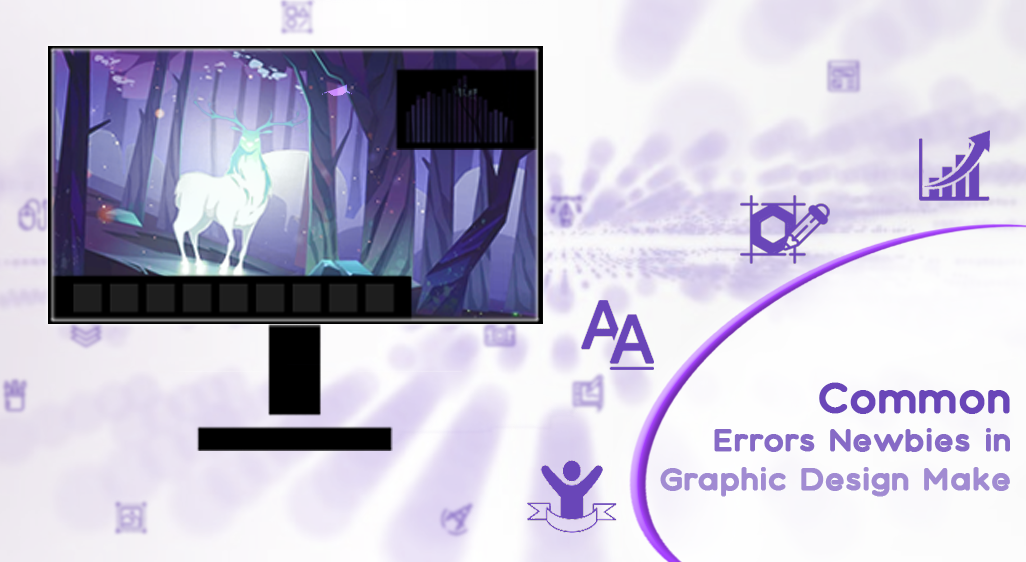Graphic design is the art of understanding and designing new concepts to share them with a broad audience to sell a product or service. Graphic design is not difficult to learn and may be achieved with constant work. Keep in mind that the design should be welcoming and inviting when doing graphic design. The Graphic Design should be unique and not be found anyplace else. Avoid making errors such as using too dark or too light colors, which would make the text invisible. After completing your graphic design school, graphic designers must plan on avoiding a few missteps that could lower the number of target consumers and, as a result, affect revenue.
Not all graphic designers receive training in the top graphic designing course before settling on a career route. Many people self-educate, especially because online classes and design software become more readily available. The issues with primary color, layout, and typography can also be the source of early career blunders for ambitious artists. We’ll talk about issues that new designers may confront during the design process.
Excessive Reliance On A Single Project
With your first assignment, there’s a sense of excitement, and it’s natural to want to put your best foot forward. Many inexperienced designers want to show off their skills right away, so they load websites that should be simple and basic with a variety of animations. Or they’ll mix several styles into one project, use six typefaces when only two are required, and employ every Photoshop tool available on a single design. You don’t want to overwhelm a project by stuffing it with all of your graphic design skills. After all, good design is good design, and even a full page can be composed smoothly and consistently. By being disciplined in your early efforts, you can demonstrate to clients and potential employers that you have a professional attitude and a keen eye.
Keeping Up With The Trends
It is vital to stay current with design trends. They can assist you in improving your work and persuade you to change your style. This is not to say that design trends should be the center of your work. Consider the gradients below: You couldn’t walk past a billboard without noticing one color gradually changing into another. Fresh designers’ work (and thus their portfolios) would quickly become cliched or worn out if they began each project by splattering a different gradient across a blank page. It would have been nearly impossible to distinguish their work from that of other artists at the time, which would have harmed their long-term prospects.
It’s important not to become overly dependent on a trend because they come and go. This rule of thumb is especially important if your customer is looking for a long-lasting design, such as a logo or a printed business card. Nobody wants to spend money on a lot of business cards that are trendy in 2017, only to have them seem dated by the end of the year. All of this is covered in the Arena Animation graphic designer course content.
When Creating Logos That Last, Prioritizing Style Over Function
In graphic design, beauty and functionality should always coexist, but striking that balance can be challenging for beginners—and even seasoned specialists. When designers initially graduate from art school, they are more accustomed to concentrating on aesthetic jobs rather than functional client websites or ad campaigns. These preferences may result in visually appealing designs. They can, however, cause designers to overlook basic requirements such as the placement of calls to action (CTAs) that stand out against background colors.
You might think that a CTA looks better in a more muted blue. However, if users click because of the bright red text, the text must be bright red. Color contrast is critical for capturing consumers’ attention and steering them along the road your clients have chosen—even if it isn’t the most visually appealing one. Designers must also select legible typefaces for client projects that require specialized information. Although an ornate design may appear attractive, clients rarely want users to have to squint in order to understand product information. The best designers are able to balance aesthetics and utility throughout time.
Using Too Many Fonts
The number of fonts utilized is the first problem that shows when comparing a novice design to a professional design. When there are too many distracting fonts in the piece, it is difficult to understand the content. As much fun as it might be to experiment with typefaces to convey various emotions and ideas, brands should stick to no more than two or three fonts on any design component. Using a single typeface can also have a big impact because it adds consistency and creates your business identity. When deciding on the number of fonts and the amount of text, keep the size of the piece in mind. One typeface can only be used in a smaller item, like the logo up top, whereas a larger or more complicated one, like your website, can use a little more imagination. Keep in mind that the kerning of your fonts—the distance between the letters—makes a significant influence on the final result of your artwork. Adjusting the space between letters can make the text more legible and improve the overall appearance of the words.
Graphic designers make typical errors such as failing to listen to their clients’ orders, researching their industry, raising their expectations due to loud claims, employing multiple fonts and colors, resulting in a diversified design, and so on. They will be of good quality if the designer keeps things simple.












